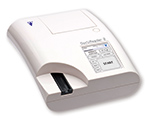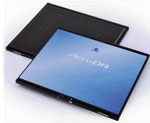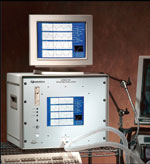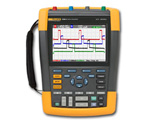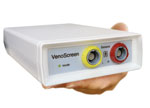Compact urine analyser
The new DocUReader 2 system is designed for physician’s offices and smaller laboratories to read and evaluate the LabStrip U11 Plus urine test strips with 50 samples / hour throughput. The compact design of this lightweight instrument offers the broadest features and highest flexibility available on any desktop size urine analyser. Auto start functionality and advanced, patented detection technique guarantee fast and accurate results. User friendly software ensures flexible testing and reporting options as well as effective data management. Manual entry of colour and turbidity data improves clinical utility. Automated result and worklist transmission is enabled by LIS connectivity. More accurate data entry and reduced transcription errors can be achieved by using the optional barcode reader and external keyboard. The new instrument features simple operation, cost efficiency, and high quality. The DocUReader 2 Pro additionally provides enhanced quality control and connectivity capabilities, operator management, and extended memory capacity.
Read more

